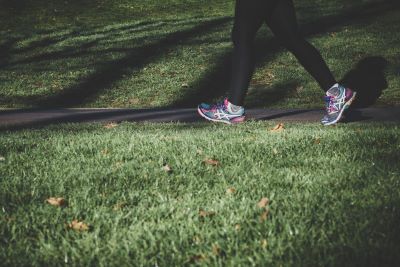Did you know you can boost your health with the best exercise for peripheral arterial disease? When you have peripheral arterial disease (PAD), your arteries narrow. First, that reduces the amount of blood flow to your legs and feet. Then, you may experience painful muscle cramps in your hips, thighs and calves. This pain is typically at its worst when you're walking, climbing stairs or exercising. And it should improve when you rest. At least at first.
Now, while exercising may make you experience painful cramps, research shows that certain exercises will, in fact, help you manage PAD. In fact, according to updated 2024 guidelines from the American College of Cardiology (ACC), the American Heart Association (AHA), the Society for Vascular Surgery (SVS) and the Society of Interventional Radiology (SIR), structured exercise should be considered a “core component” of PAD patient care. But just what kind of exercise is best is also a decision that can best be made with the help of science.

According to one study in the Intervention Journal, supervised treadmill workouts are the most effective form of exercise for people with PAD. Study authors suggest: "exercise sessions should progress up to a target goal of accumulating 30 to 45 minutes of treadmill walking per session” and “exercise should be carried out at an intensity that elicits mild claudication pain within 5 minutes, and moderate to moderately severe claudication within 10 minutes followed by rest until claudication pain subsides." In other words, the goal of this exercise session is to work to the point of pain until, with time, the pain takes longer to show up. In this way, PAD patients can experience longer periods of walking comfort in their real lives as well.
Additionally, a study from the European Heart Journal reveals that, for best results, walking workouts should happen at least three times a week. Each session should last at least 30 minutes, and a program should continue for at least 12 weeks to see the best improvement in your PAD symptoms. But what if you're not up to training for 30 minutes at a time right away? Don't worry: you can still experience key benefits.
When you're beginning a walking program, you may wonder how much time is enough? Luckily, according to the World Health Organization, it doesn't have to be that long. In fact, 150 minutes of walking a week gives you so many health benefits!
What does that mean for you, if you're doing supervised treadmill sessions for PAD? To hit your weekly walking goal, you could do three 45-minute sessions, and one 30-minute session. That way, you'd get all the benefits of walking workouts. And, you'd see progress with PAD symptoms such as claudication.
Not able to hit that 150 minute per week mark? Or struggling to hit 10,000 steps? Don't worry. Any walking you can fit into your day will improve your health. Of course, it doesn't have to be on a treadmill either. It can be scattered throughout your day. Or be integrated into these alternative workouts for PAD.
Of course, for some PAD patients, treadmill walking may be too difficult--or simply unappealing. Not to worry: the study suggests other forms of exercise can also be effective. In fact, the authors suggest walking around your neighborhood as one obvious alternative to treadmill workouts. Seated exercise bikes can also help people with PAD, as can workouts that involve resistance training, using your body weight, bands or weighted dumbbells.
Another great choice that doesn't require any equipment? Try leg extensions, since they boost blood flow to the fronts of your legs, helping support your walking muscles and making them one of the best forms of exercise for peripheral arterial disease. To get started, sit on a chair with a straight back, holding the chair edges with your hands for stability. Now, lift one extended leg off the floor so it is parallel, straightening at the knee without locking out your joints. Slowly lower the leg to the floor, and repeat on the other side, alternating legs for at least 30 seconds. In this way, you can work the best exercise for peripheral arterial disease seamlessly into the busy schedule of your day.
While walking is one of the best exercises for PAD, you want to steer clear of high-impact workouts that put lots of pressure on your feet. (Think long runs, heavy weight lifting, or sports with lots of jumping.) Also, since temperature can increase stress on your body, try to avoid outdoor workouts when it's very hot.
Dealing with an ulcer? Skip those walks and try engaging in gentle chair workouts. And, whether or not you have a leg or foot wound, always clean and dry your feet before and after exercise. Also, make sure to exercise with your shoes on, checking that the supportive foot gear is well-fitted.
Now, while exercise can help improve your ability to walk comfortably with PAD, it cannot cure the condition. Fortunately, in our Houston and Dallas vascular clinics, we can easily diagnose and treat your PAD. We start with a bedside test, called an Ankle-Brachial Index (ABI), which uses ultrasound and blood pressure cuffs to evaluate the circulation in your arms and legs. If this test is abnormal we may order further imaging tests such as Magnetic Resonance Angiography (MRA) or Computed Tomography (CT) to determine the extent of your problem and help us plan your PAD treatment, choosing the least invasive option that will help you find relief. So if you are experiencing leg cramps and suspect PAD may have set in, schedule an immediate consult schedule an immediate consult schedule an immediate consult to begin finding relief!

Scheduling
Please contact our dedicated specialists to schedule a consultation today.
2024 Texas Endovascular. All rights reserved. Website Design by Healthcare Success